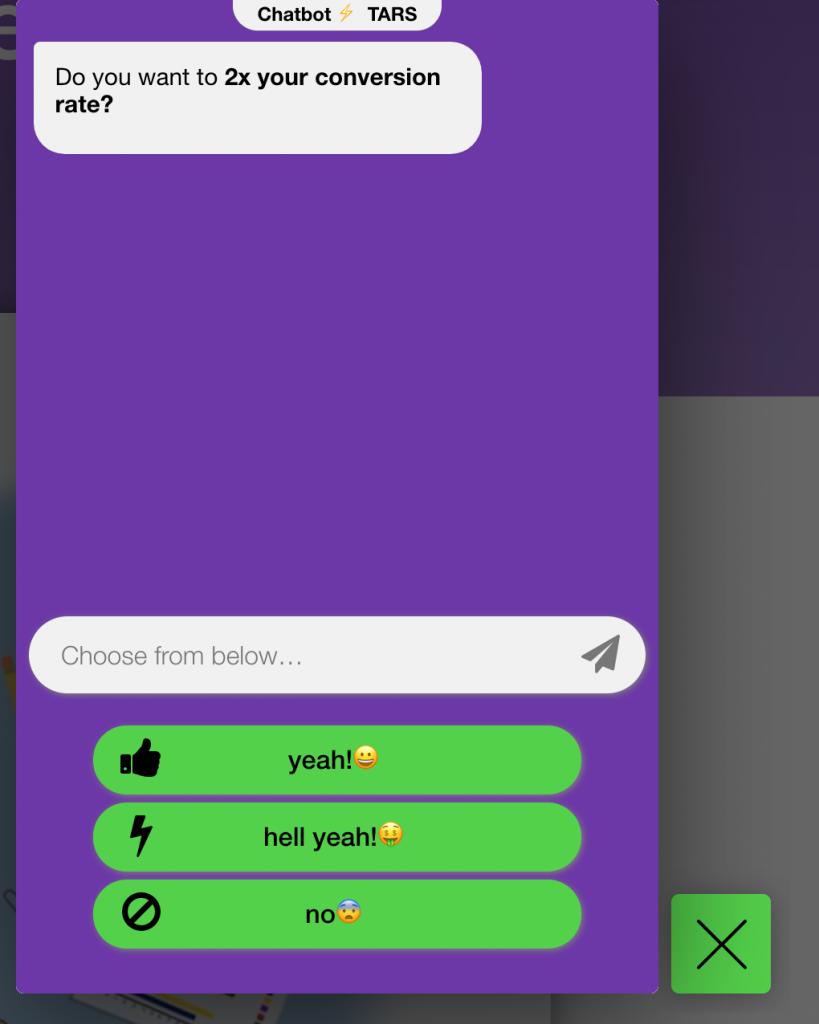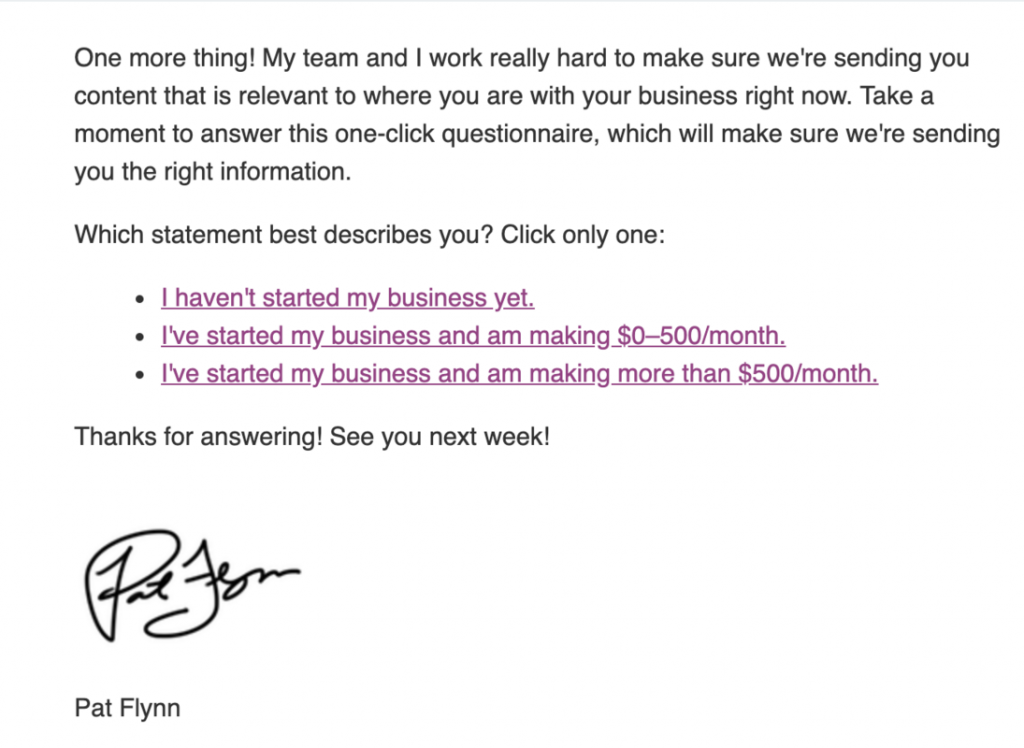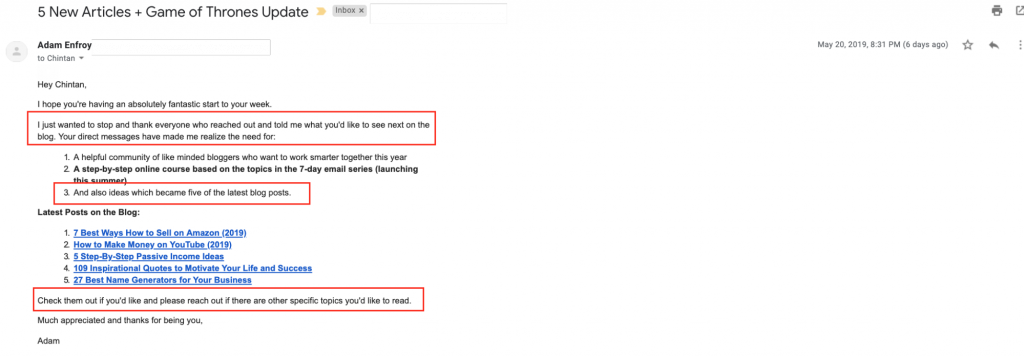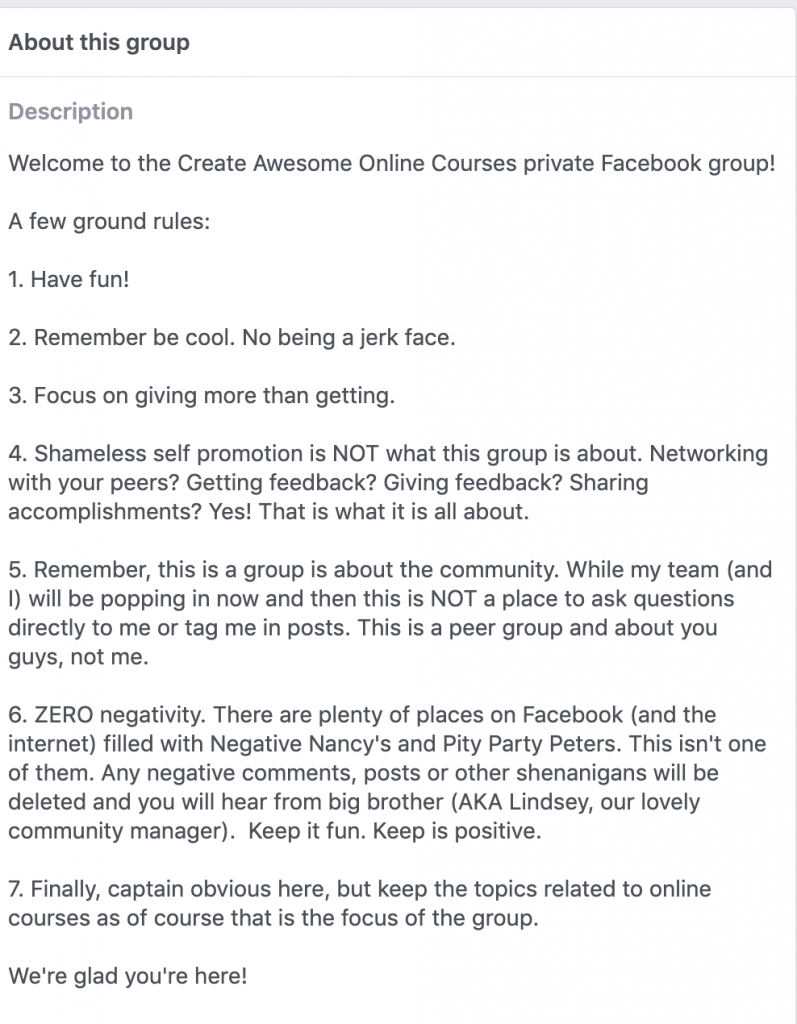How To Practice Conversational Content Marketing: 3 Simple Ways

Content marketing is now mainstream. It’s used by all kinds of business for creating brand awareness and establishing credibility with prospects.
However, the way most brands approach content marketing is broken. There’s no feedback taken from the audience and zero efforts are put to build a community around the brand.
In this article, you’ll see the importance of having a conversation with your audience. Let’s get started by looking at a couple of ways in which most brands approach content marketing and the gaps in them.
2 Ways Brands Approach Content Marketing (And What’s Wrong With Them)
A common way most brands begin content marketing is by starting a blog. In a small company, it might mean that someone from the C-suite writes on subjects that (they think) might interest their audience. Unknowingly, every article becomes an advertorial to promote the products.
Such a model rarely delivers business results because there’s no value-addition for a prospect. The blog soon dissolves in obscurity.
Another widely used strategy involves dissecting competitors using competitor intelligence tools. The idea is to find the articles and marketing channels that deliver business value in your industry. Once the research phase is complete, brands try to “replicate their competitors.”
Sure, you’re providing value in such a model. However, the approach is one-sided and lacks efforts for establishing a relationship with your audience. In the long-run, another competitor might knock you down by “replicating your strategy.”
Do you belong to either of the above two categories of brands? Then, you need to spend time deepening your connection with your audience. Regular conversation with your tribe is essential. Before we move forward, I have reverse engineered brands pursuing content marketing successfully here that you can explore for inspiration.
An Introduction To Conversational Content Marketing
To develop a healthy relationship with your readers it’s not sufficient to create high-quality content that’s prioritized by search volume and keyword difficulty. You need to solicit feedback and cater to the needs of your prospects as well as buyers.
The art of conversational content marketing involves listening intently, finding the interests of your audience, and delivering content that helps them. Your brand consequently becomes a hero of their story.
As an example, let’s dissect Into The Gloss. It’s the blog of Glossier, a billion-dollar brand that has thrived on maintaining a direct and intimate relationship with its customers. One of its most popular posts right now is on the different types of acne.

If you would go by search volume, then the phrase gets 2,300 searches per month. However, the article gets over 5,000 visitors every month to their blog showing that the subject had a much higher traffic potential.
Do you know how they decided to write on the subject? It was based on the feedback they received from their highly engaged community. Even their products are created after interacting with them.
To further streamline having a dialogue through your content marketing and building a relationship, here are three simple ways.
1. Deliver Personalized Experiences
Do you treat all of your first-time visitors in the same way?
That’s what most businesses do.
They have a right sidebar that shows their “most popular posts.” The website also offers a free eBook (or a similar lead magnet) to any reader that subscribes. However, the subject of the offer is only loosely related to the article.
While the strategy worked fine, now you can deliver personalized experiences to prospects on the first exposure to your brand. You can use a tool like TARS to start a conversation. For maintaining context, you can chat on the topic of the page they land on. Suppose the user visits:
- A blog post – Offer them a content upgrade that helps them implement the advice you share in the article. You can also quiz your audience and based on the answers make more specific offers.

- A landing page – Arnav from TARS, has already discussed how you can replace your landing pages altogether with bots. You can also ask questions related to understand the needs of your visitors and offer them to talk with your sales team.

Won’t you make a better impression by delivering relevant information to a prospect after understanding what they seek?
To begin, you can implement personalization through bots on your five most trafficked pages. The best part is that you don’t need to create content from scratch. You can repurpose a piece that’s contextually relevant.
Pro Tip: If you have an email list, then you can request information from them to serve relevant content. Here’s a question Pat Flynn asks his subscribers at the end of his email newsletters.

2. Gather Feedback From Your Audience
While spanking articles on low-competition keywords to get traffic is a great strategy at the beginning, it needs to evolve. You need to collect emails of your dedicated followers. Then, involve them in content creation by asking them about their interests and pain points.
I already showed you how Glossier has a dialogue with their audience and builds a relationship through conversational content marketing. Let me show you another example.
Adam Enfroy recently started a blog and started guest posting extensively to build his domain authority. Once he had some traffic and email subscribers rolling in, he didn’t rely on conventional keyword research alone. He actively involved his newly acquired audience for fresh blog post ideas.

The feedback from your audience can also be turned into keywords. That’s what marketing agency, Grow and Convert, do with their clients using their proprietary pain-point SEO strategy. Here’s how it looks like and compares with the traditional keyword research:
Often through the strategy, you might end up with low-volume keywords. However, the traffic you will generate will convert more.
In the process of listening to your audience, you will also know the exact phrases they use to describe their problems. By using them in your blog posts, your content will start resonating with your audience.
If you have existing customers, then your job becomes easier. You can answer their common questions on your blog as well.
Marcus Sheridan calls the strategy as “They Ask, You Answer.” For his inground pool company, he attributed $2M in revenue to a single blog post. It covered the cost of creating a fiberglass pool and was one of the most common questions asked by his prospects.

3. Create A Private Community
To connect authentically with your customers and prospects, there’s no better way than getting your enthusiasts together at a place.
The community provides a direct communication channel with you and close the feedback loop. If a customer faces technical problems, then other members can help. Also, it lets your customers and prospects to influence your brand’s story.
Besides getting feedback for your products and getting feature ideas, a community is also useful for discussing blog post ideas. Here’s Gael from Authority Hacker (AH) asking his customers what they would like to see in a new article he’s writing. He received 50 comments showing the incredible engagement you can generate from such a group.

Want to start a Facebook group for your customers? Then first lay down ground rules like Create Awesome Online Courses (CAOC) does below.

As you can see, the subjects of your community should hover around the core interests of your customers and prospects – it allows all the members to bond and derive value.
A couple of months ago, Jimmy Daly from Animalz started a Slack community on content marketing. At the time of writing, 237 content professionals had joined the community, communicating across 11 channels. It has become a great avenue to discuss all things related to content marketing and build relationships with industry folks.
Dominic Kent from Mio interacted with Archita Sharma at Automate.io through the guest-post channel on Slack. And they struck a mutually beneficial partnership. Later Kent thanked Daly on Twitter for starting the community.

Note that while opening such a group, privacy is key. It will allow conversations to freely and openly thrive. To give assurance to your members, you can lay down guidelines to convert your community into a secret space where discussions aren’t made public without permission.
Pro Tip: Facebook is aggressively pushing the reach of Groups in the News Feed and encouraging businesses to use them. However, be wary of creating a community on Facebook. It might take a single algorithm change to wipe out the reach of your Group and let your community-building efforts to go waste.
For reference, look at the decline in the organic reach of Facebook Pages over the last decade.

A Slack channel is a better bet than relying on Facebook Groups!
Final Thoughts
Content marketing is not merely a tool to build awareness of your brand. It’s also the beginning of a conversation with your prospects and customers. Show your advocates you’re on their side, communicate with them delightfully, and you will strengthen your relationship with them.
I discussed three ways to take a conversational approach in your content marketing and hope that you’ll experiment with them to improve your marketing efforts.
It’s your turn now. Are there any other ways you in which you pursue conversational content marketing? Let me know in the comments below.
Chintan specializes in content marketing for SaaS businesses. He also helps creators build sustainable businesses from their crafts at Elite Content Marketer.
- 2 Ways Brands Approach Content Marketing (And What’s Wrong With Them)
- An Introduction To Conversational Content Marketing
- 1. Deliver Personalized Experiences
- 2. Gather Feedback From Your Audience
- 3. Create A Private Community
- Final Thoughts


Build innovative AI Agents that deliver results
Get started for freeRecommended Reading: Check Out Our Favorite Blog Posts!

Using Conversational Marketing for Lead Generation

How to use Email Campaigns to promote your bot?

Our journey in a few numbers
With Tars you can build Conversational AI Agents that truly understand your needs and create intelligent conversations.
years in the conversational AI space
global brands have worked with us
customer conversations automated
countries with deployed AI Agents



